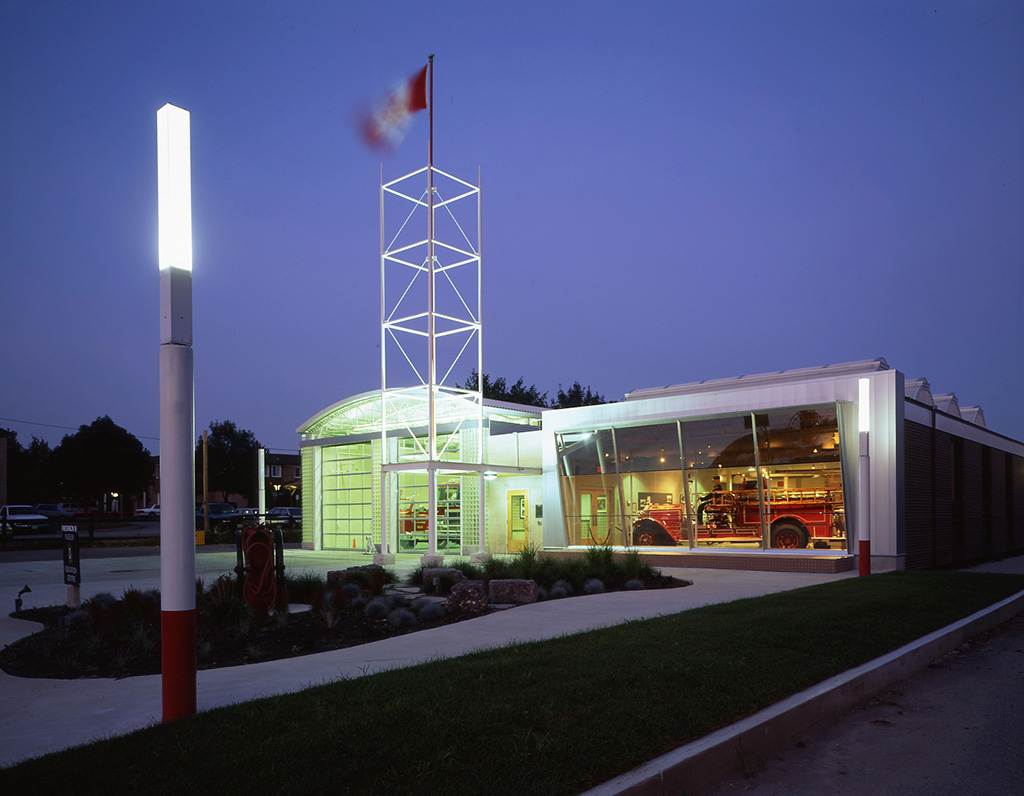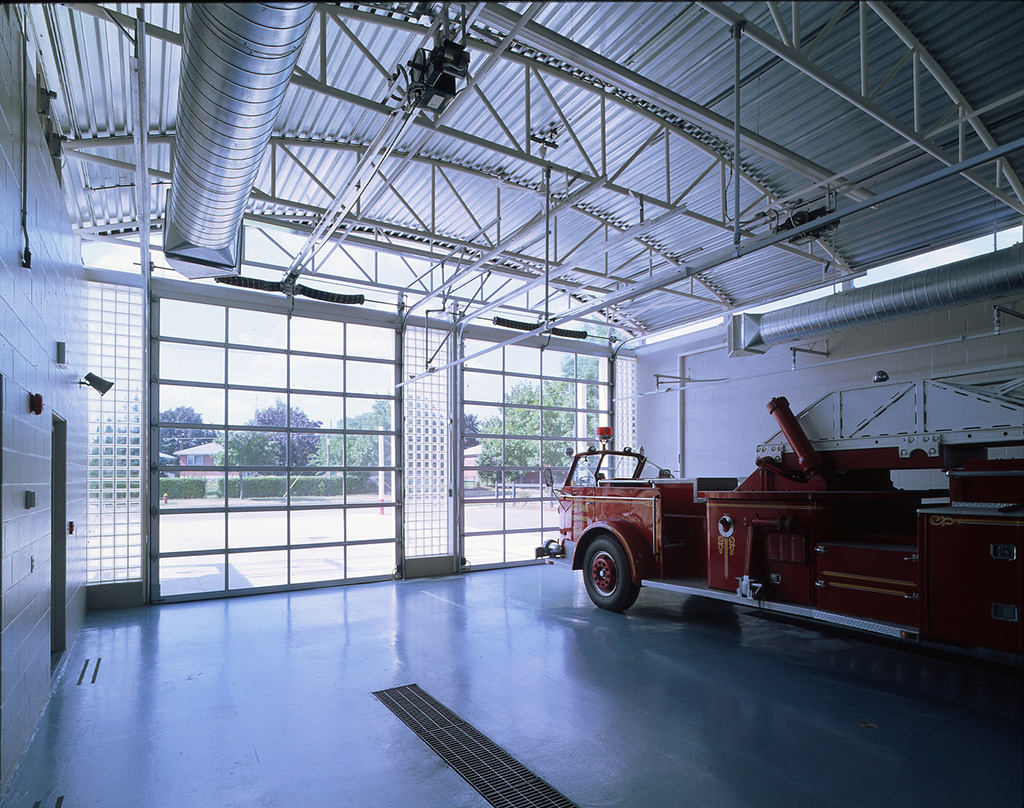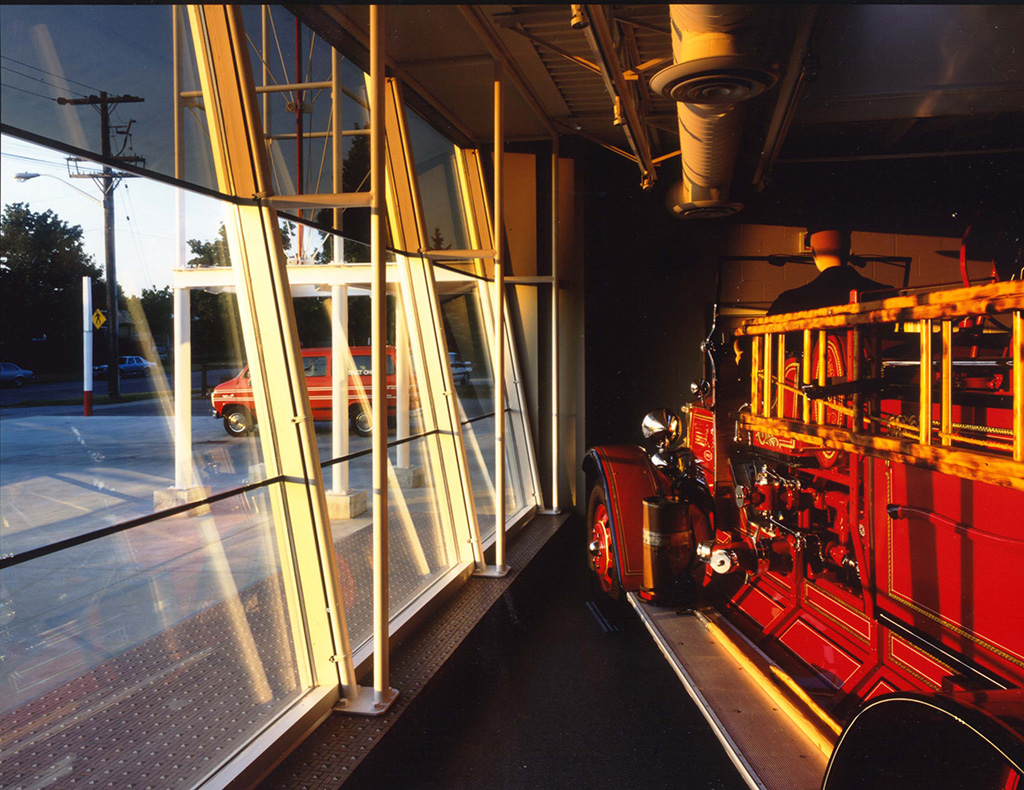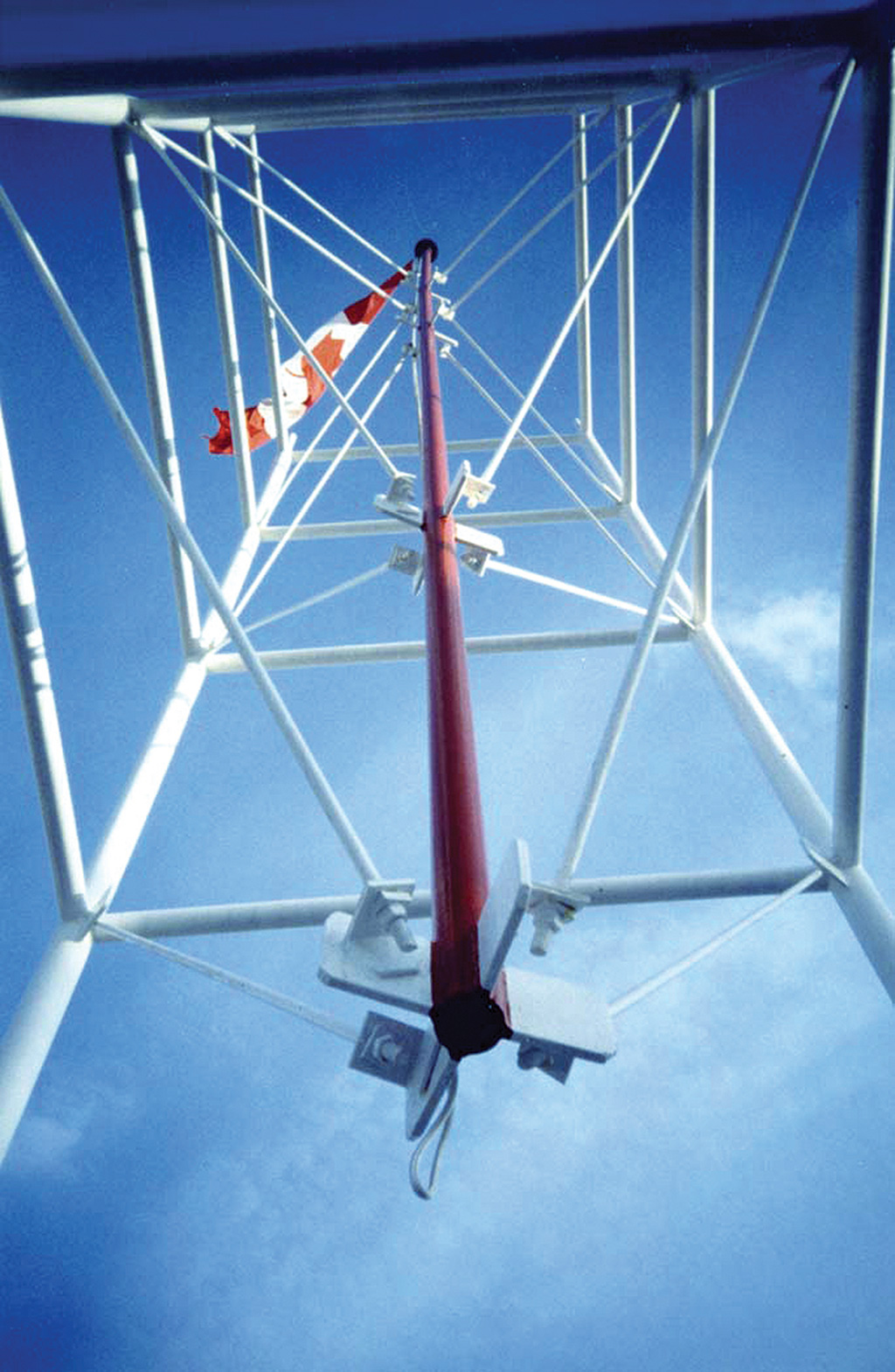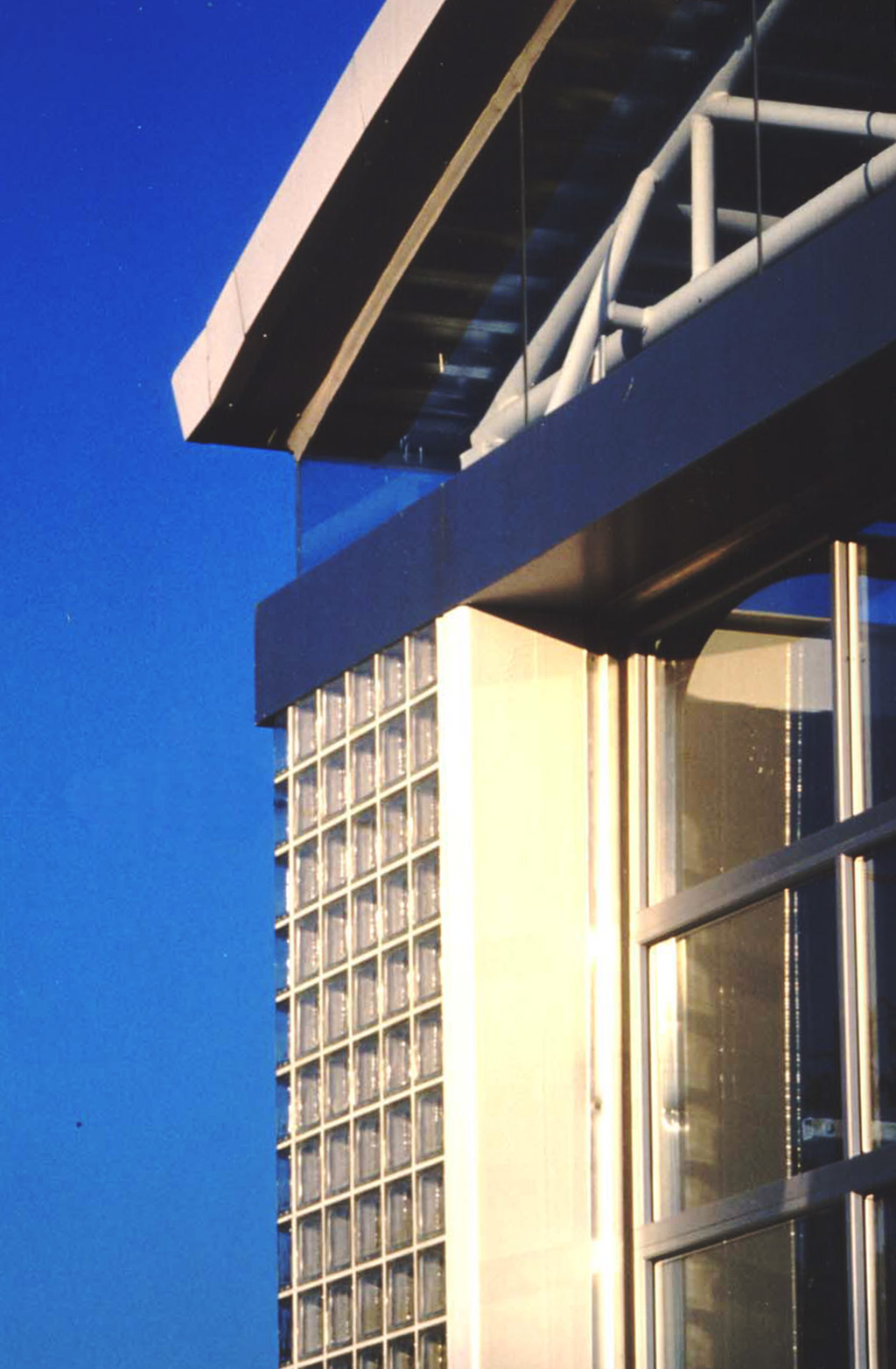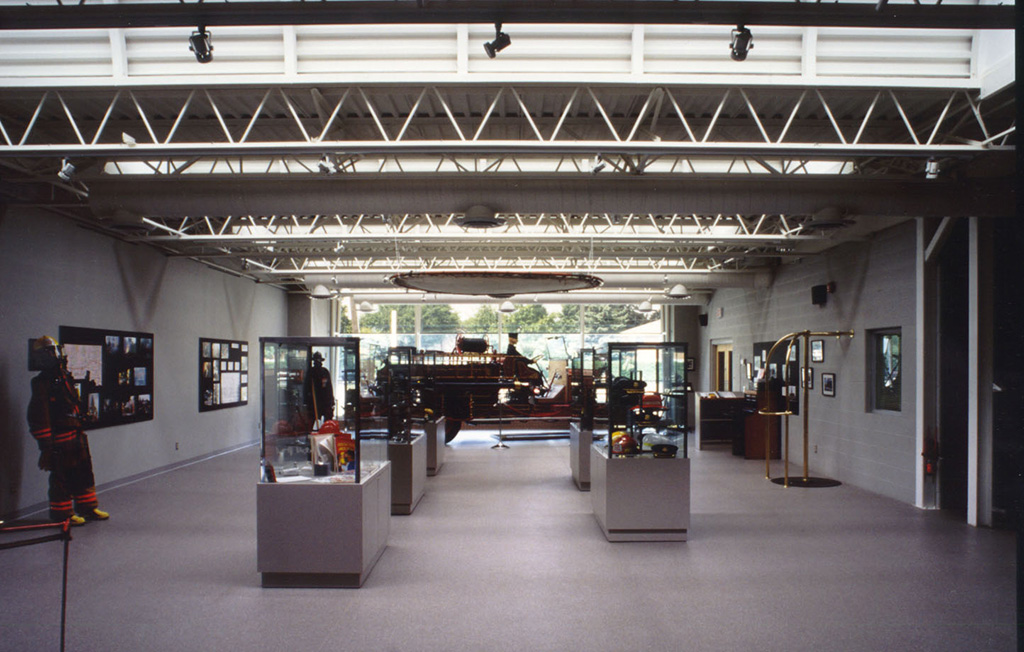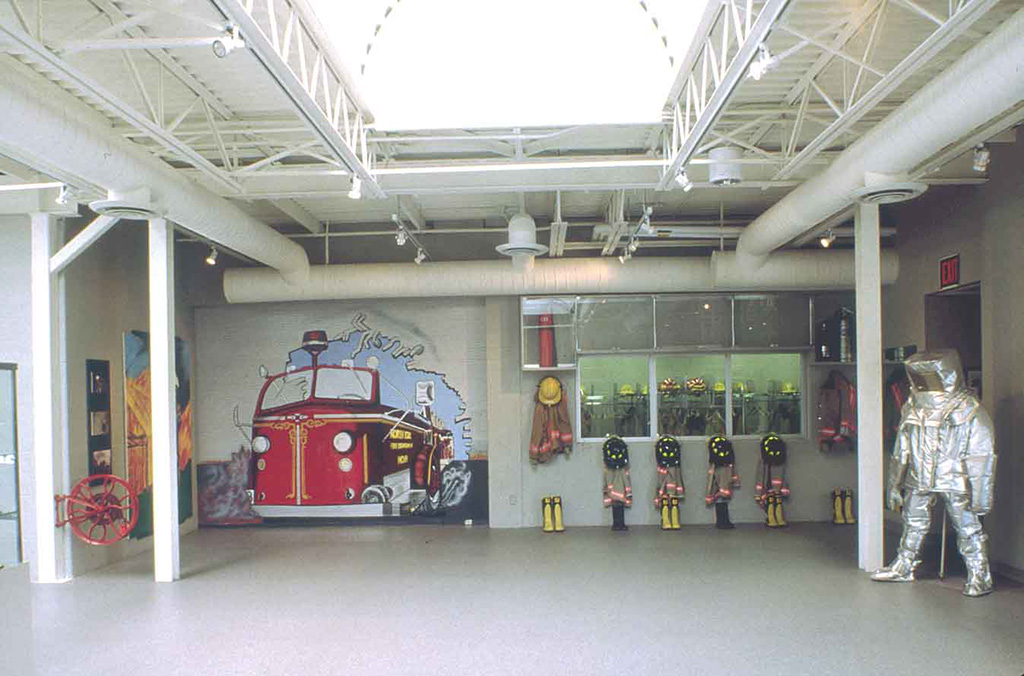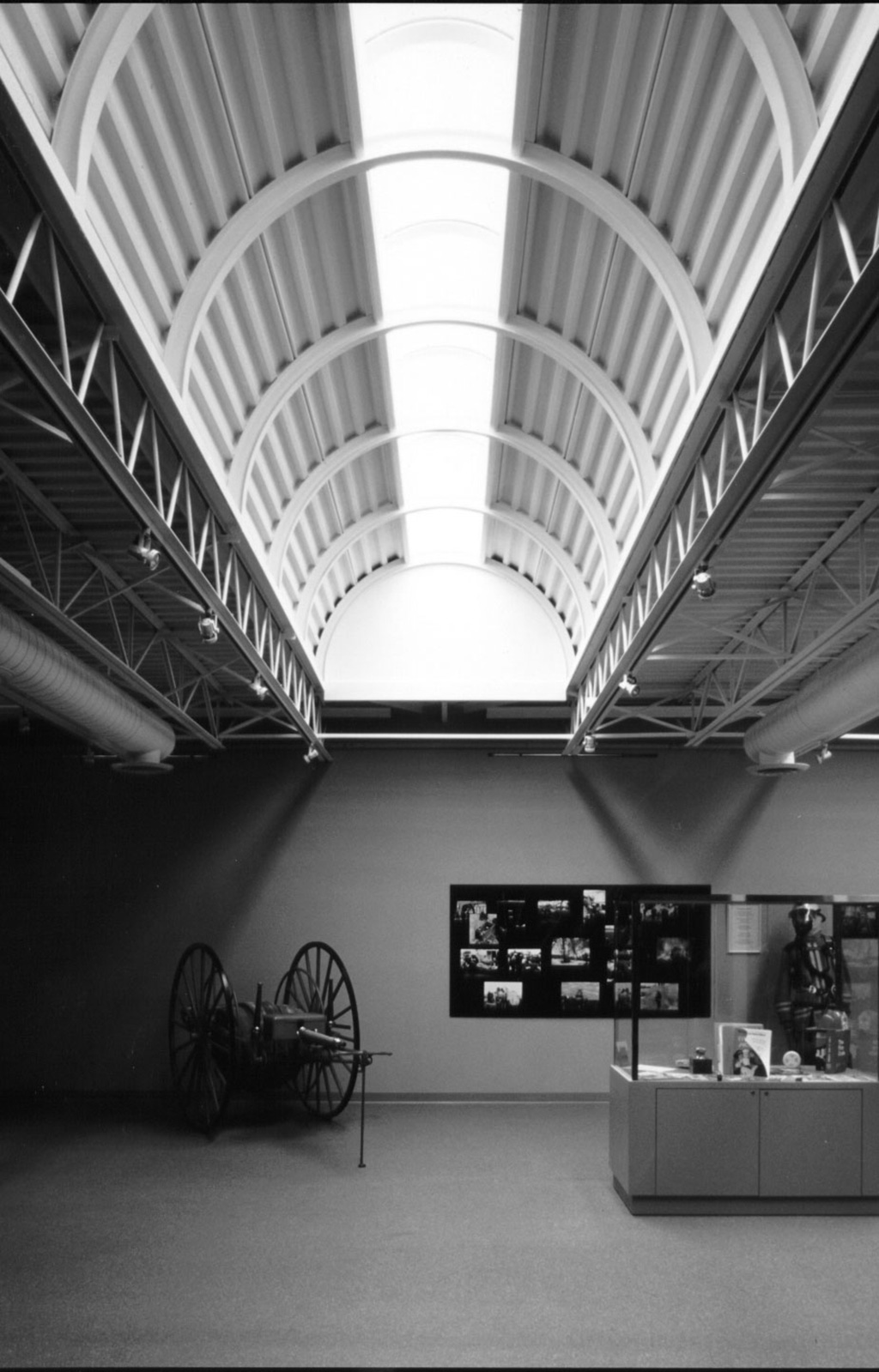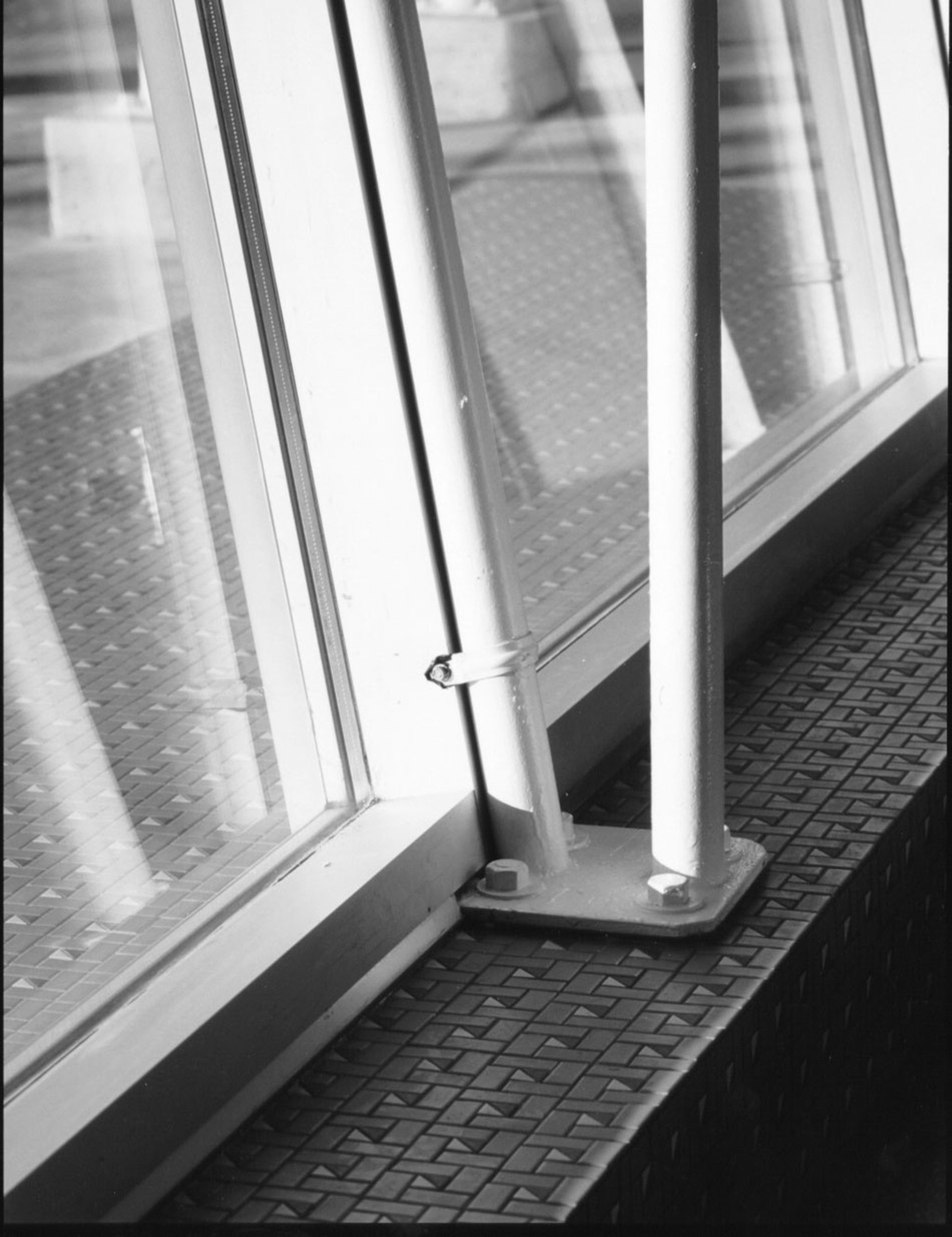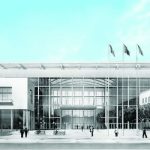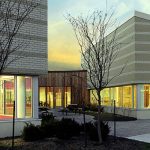Reborn as a Living Museum with a strong community focus, the programme involved an addition to, and conversion of, a one storey, brick-box office building into a two-bay Fire Station, Fire Training Facility, Community Museum, Interactive Education and Learning Centre. The entire building, including all the normative functioning spaces of the fire station, combine with the museum-proper component to create one, rich and vital museum. (Competition Winning Building: 1997 North York Award of Excellence – only building to win this award in 1997) (Published in Canadian Architect)
The site is in a suburb of Metro Toronto. The programme involved a 1000SF additional to and conversion of a one story, 9000SF brick box office building into a two-bay Fire Station, Museum, and Education Center.
The central theme of the conversion is The Living Museum, whereby the entire building, including all the normative functioning spaces of the fire station, which collectively describe life there, combine with the museum-proper component to create one, working, vital museum.
This concept embraces the front courtyard, whose defining concrete mat has an empty, active fire truck driveway side, and a passive fire-themed sculpture court side, containing an amorphous-shaped garden composed of a selection of low, medium and high grasses in hues to depict a fire: Fire Island. In-ground lighting is installed to illuminate firefighters’ objects which will be added in time to this outdoor part of the museum. Like the Tai Mahal’s minarets, four vertical- light standards at the square’s corners demarcate the mat as a special place.
The focus of the building’s front is a flagpole suspended inside an open, steel-framed tower, the exact dimensions of the brick tower of North York’s dismantled first fire station. (The cost of rebuilding the original tower was prohibitive.) The flag pole incidentally refers to the traditional firefighter’s pole(used for sliding down from dormitories to Apparatus Room).
With the exception of the landscaped concrete mat, salient parts of the renovation programme are expressed in steel: the steel suspension tower and the light standards, the carved-plate sign, the triangular framed, tilted front museum wall, the apparatus room of bowstring trusses’ floating’ on glass, the museum’s skylit roof vaults. These energetic episodes, all naturally lit, provide a striking counterpoint to the existing, rectangular brick box.
A robust, diaphanous front facade in varied glazing enhances the Living Museum theme. For example, the glazing of the museum-proper side creates a trompel’oeil afftect as the viewer looks into the inner museum in the lower glass section, and in the same titled plane, simultaneously, sees the outer museum and herself/himself in the mirrored upper section. The viewer becomes, suddenly and uncontrollably, and ‘artifact’ within The Living Museum.



